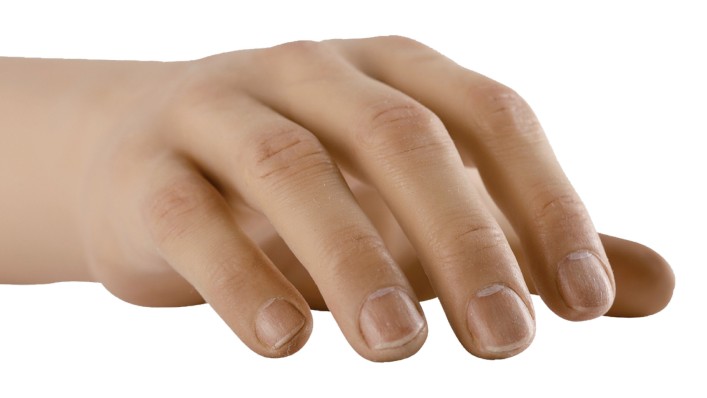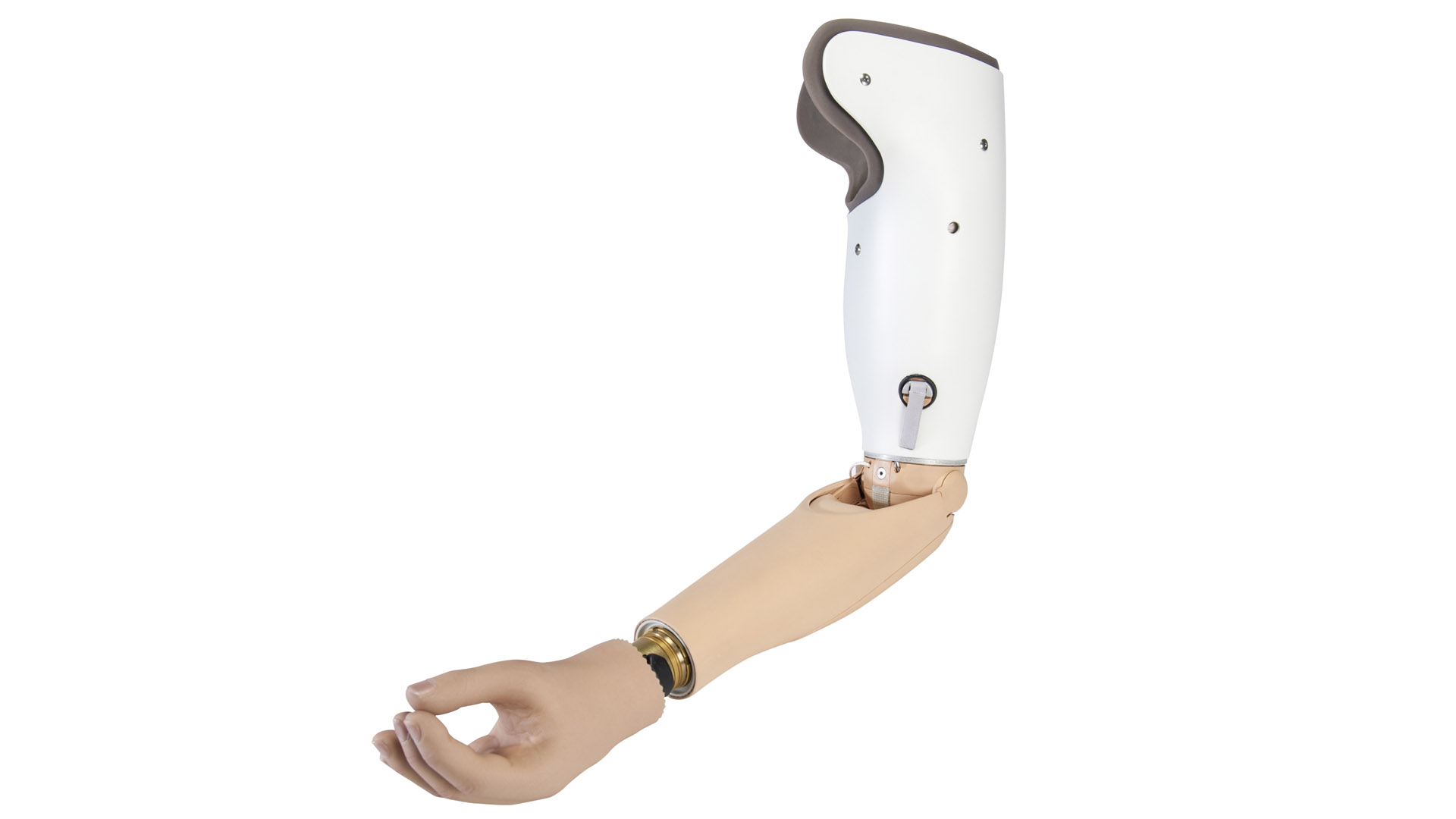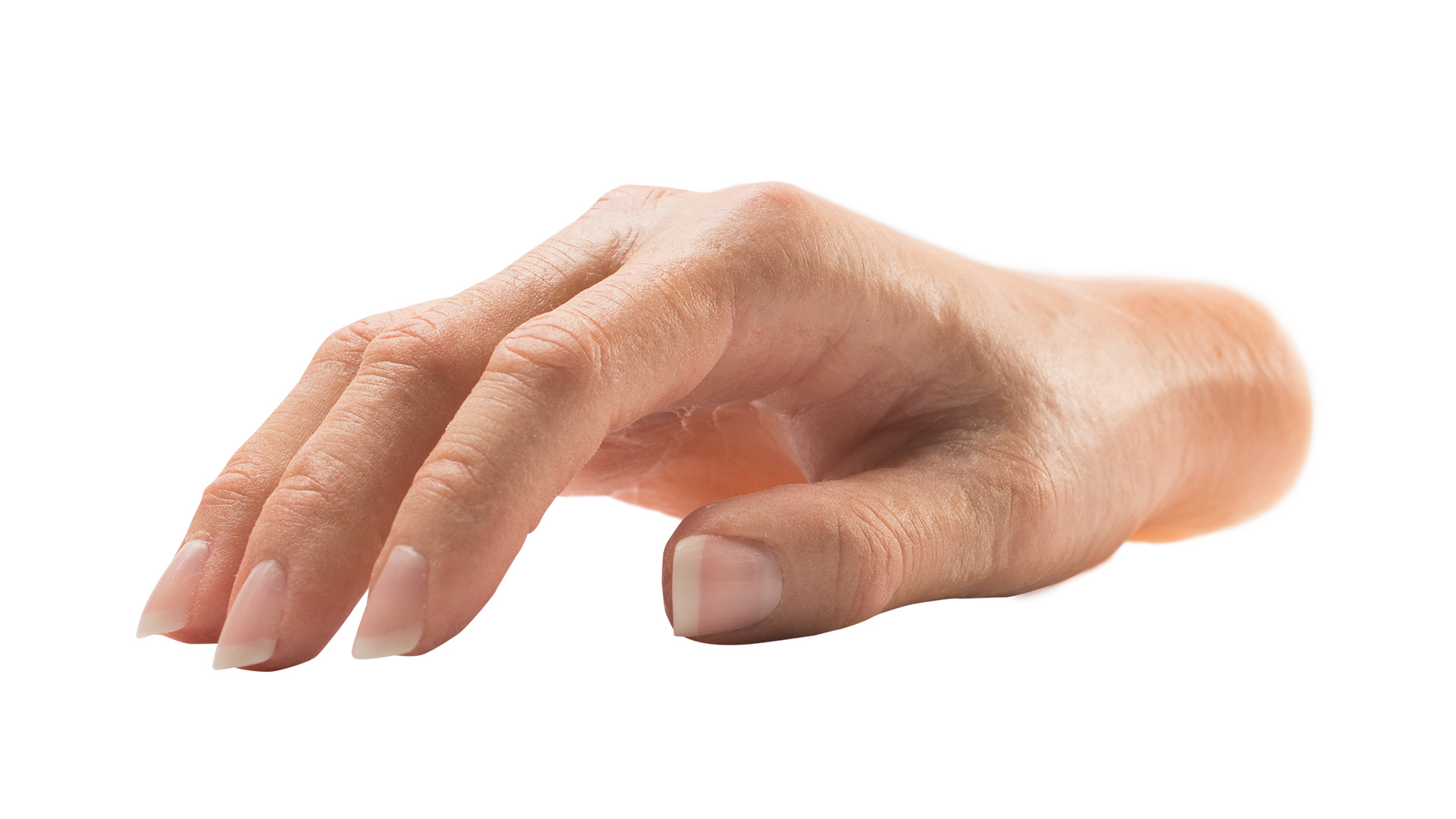AxonBus prosthetic system with Michelangelo Hand
The Michelangelo Hand helps you regain extensive freedom
Benefits at a glance

Numerous gripping options
Thanks to the numerous functions of the Michelangelo Hand, you have seven different hand positions available to you. Whether you’re cooking, turning pages in a book or typing on a keyboard, the Michelangelo Hand helps you integrate such movements into your everyday life, leisure time and work.

Relaxed wrist unit
The AxonWrist mechanical wrist unit can be flexed, extended and rotated inwards or outwards. In addition, the AxonWrist imitates the movement of a relaxed, natural wrist in a newly developed flexible mode. This feature is currently unique! Unnatural compensating movements can thus be avoided, encouraging a healthy body posture.

Short version
The Michelangelo Hand Transcarpal now makes it possible for users with long residual limbs and a transcarpal-level amputation to be fitted efficiently with the fast and powerful prosthetic hand.

Natural design
For the product designers and developers, making the appearance and feel of the Michelangelo Hand resemble a natural hand as closely as possible posed a special challenge. The fingers are made of hard and soft materials, thus imitating the natural hand in detail. The flat oval hand adapter enhances the natural appearance – even more than the previously available round wrist units. Matching prosthesis gloves are available in six different hues.

Matching gloves
The durable prosthesis gloves, available in six different hues, are constructed in layers. Coloured fibres inside imitate the natural vein structure of the human hand. Ribs are integrated into the shell of the hand to make the movement of the wrist unit and thumb appear natural. For those who wish to show off their modern prosthesis, a translucent and a black prosthesis glove are available as well.
Functionality
Seven different grip types
Few parts of the human body are as versatile and complex as our hands. Only the perfect interplay of nerves, tendons, a total of 27 bones, 39 muscles and 36 joints allows us to perform everyday tasks naturally. Recreating as many of these numerous functions as possible in a prosthesis is one of the greatest challenges for medical technology. The Michelangelo Hand with its seven different gripping possibilities restores numerous functions of the natural hand. Its gripping force is between 6 and 7 kg. You can adjust and control the force needed to hold a heavy or light object with the Michelangelo Hand.
Lateral pinch
For the lateral pinch, also known as the key grip, the thumb moves sideways to index finger. This allows you to grasp flat objects such as paper or credit cards from the side.
Lateral power grip
The thumb moves laterally towards the index finger. This allows you to grasp objects of average size, such as a mobile phone.
Finger abduction/adduction
Opening and closing the fingers allows you to hold flat, thin objects (< 3 mm) such as banknotes.
Tripod pinch
Known as the pinch grip, the thumb together with the index and middle fingers forms a three-point support so you can hold small objects like a pen securely.
Opposition power grip
The hand's large opening width allows you to securely hold objects with a larger diameter.
Open palm
A flat hand position is achieved with the open hand, so that you can carry objects like a plate or mat naturally.
Neutral mode
The Michelangelo Hand looks very natural in the rest position. In flexible mode, the wrist unit yields easily to pressure. When you relax the muscles, the Michelangelo Hand also assumes a natural, relaxed hand position.
Correct prosthesis training helps with practical application
A good fitting does not end with the professional adaptation of a prosthesis. The better you know your new Michelangelo Hand, the more efficiently you can use it in everyday life. That is why Ottobock has developed practical accompanying exercises to familiarise you with the prosthetic hand, so that you can reap the full benefit of the numerous functions and gripping options of the Michelangelo Hand. Ideally an especially trained therapist assists you with the multilevel training concept. Among other things, it covers the daily handling of the prosthesis including charging the battery, care instructions, storage, and turning the prosthesis on or off. This is followed by exercises to help you learn the various gripping possibilities. In addition to training with your therapist, there is a DVD that helps you repeat and practice the exercises at home as well.
Technical information
Technology
The Michelangelo Hand is controlled on the basis of the AxonBus system (AXON stands for Adaptive eXchange Of Neuroplacement data). It was derived from proven, safety-related systems in the aviation and automobile industry. The advantage is that the AxonBus system constitutes an integrated data transmission system. The individual components are optimized to communicate perfectly and work with each other. The benefit for the user is that there is no delay in the speed and functionality of the Michelangelo Hand. The AxonBus system also improves the safety and reliability of the prosthesis.
Care instructions
Ottobock AxonSkin Natural gloves
Cleaning the glove with water and soap is recommended for daily care. A special outer layer reduces the gloves' susceptibility to soiling and simplifies cleaning. If water and soap are insufficient, a special cleaner (640F12) with a pump sprayer (640F13) can be used Please also note the specific care instructions of the special cleaner.
Downloads

- download 1.52 MB | PDF
Michelangelo Hand
Michelangelo Hand brochure for end users
FAQ
-
What movements are possible with the Michelangelo Hand?
The Michelangelo Hand features seven different gripping possibilities. This allows you to grasp and hold objects purposefully, and to lift heavy as well as light items.
-
Can I use a touch screen with the hand prosthesis?
While this is not yet possible at this time, the related research and development work is ongoing.





